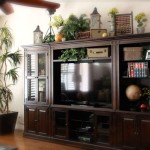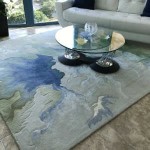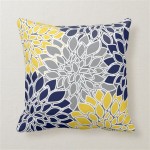Decorative Grab Bars for Stairs: Blending Safety and Style
Staircases are essential architectural features in multi-level homes and buildings, providing a means of vertical transportation. However, they also pose potential hazards, particularly for individuals with mobility limitations, seniors, and young children. Grab bars are designed to enhance stair safety by providing a secure handhold, reducing the risk of falls. While traditionally viewed as purely functional, grab bars have evolved, and decorative options are now available that seamlessly integrate safety with aesthetic appeal. This article explores the realm of decorative grab bars for stairs, examining their benefits, design considerations, installation aspects, and the various styles and materials available.
Understanding the Need for Grab Bars on Stairs
The primary purpose of grab bars on stairs is to provide enhanced support and stability for individuals ascending or descending. Falls on stairs can result in serious injuries, including fractures, sprains, and head trauma. The risk of falls increases with age, decreased mobility, or certain medical conditions. Grab bars act as a crucial safety measure, offering a firm grip to maintain balance and reduce the likelihood of accidents. They are particularly beneficial for:
- Seniors: As balance and strength naturally decline with age, grab bars offer added security and confidence when navigating stairs.
- Individuals with mobility limitations: People with arthritis, joint pain, or other physical limitations can benefit from the support provided by grab bars.
- Those recovering from injuries or surgery: Grab bars can assist in regaining mobility and independence during the recovery process.
- Families with young children: Children may have difficulty navigating stairs safely, and grab bars can offer an additional layer of protection.
Beyond these specific groups, grab bars can be beneficial for anyone, regardless of age or physical condition, as they provide an added measure of safety and security when using stairs.
The Evolution of Grab Bar Design: From Functional to Decorative
In the past, grab bars were often viewed as purely functional fixtures, typically found in institutional settings such as hospitals or nursing homes. Their design was utilitarian, focusing solely on providing a secure grip without much consideration for aesthetics. These grab bars were often made of stainless steel or chrome and featured a simple, industrial appearance.
However, as awareness of the importance of accessibility and universal design has grown, so has the demand for grab bars that are both functional and visually appealing. Manufacturers have responded by developing a wide range of decorative grab bars that can complement various interior design styles. These grab bars are available in a variety of materials, finishes, and designs, allowing homeowners to enhance the safety of their stairs without sacrificing aesthetics.
The shift towards decorative grab bars has been driven by several factors, including:
- Increased awareness of accessibility: The Americans with Disabilities Act (ADA) and other accessibility standards have raised awareness of the importance of creating inclusive environments that meet the needs of people with disabilities.
- Growing demand for universal design: Universal design principles emphasize creating products and environments that are usable by all people, to the greatest extent possible, without the need for adaptation or specialized design.
- Evolving design trends: Homeowners are increasingly seeking out products that are both functional and stylish, reflecting their personal taste and design preferences.
As a result of these factors, decorative grab bars have become increasingly popular, offering a seamless blend of safety and style.
Key Design Considerations for Decorative Grab Bars
When selecting decorative grab bars for stairs, it is essential to consider several design factors to ensure that the bars are both functional and aesthetically pleasing. These considerations include:
Material: Grab bars are available in a variety of materials, each with its own unique properties and aesthetic appeal. Common materials include:
- Stainless steel: Known for its durability, corrosion resistance, and sleek, modern appearance.
- Brass: Offers a classic, elegant look and is available in various finishes, such as polished, brushed, or antique.
- Wood: Provides a warm, natural feel and can be stained or painted to match existing woodwork.
- Acrylic: A lightweight, versatile material that can be molded into various shapes and colors.
The choice of material should be based on the desired aesthetic, as well as factors such as durability, maintenance requirements, and budget.
Finish: The finish of a grab bar can significantly impact its overall appearance. Popular finishes include:
- Polished chrome: A shiny, reflective finish that complements modern and contemporary designs.
- Brushed nickel: A softer, more subtle finish that is less prone to fingerprints and water spots.
- Oil-rubbed bronze: A warm, rustic finish that adds character and charm to traditional designs.
- Matte black: A sleek, modern finish that provides a striking contrast against light-colored walls.
The finish should be chosen to complement the existing hardware and fixtures in the staircase area.
Style: Decorative grab bars are available in a wide range of styles, from traditional to contemporary. Some popular styles include:
- Traditional: Features ornate details, such as fluted edges or decorative brackets.
- Modern: Emphasizes clean lines, simple shapes, and minimalist design.
- Transitional: A blend of traditional and modern elements, offering a timeless and versatile aesthetic.
- Rustic: Incorporates natural materials, such as wood or wrought iron, to create a warm and inviting feel.
The style of the grab bars should be chosen to complement the overall design of the home or building.
Grip: While aesthetics are important, the primary function of a grab bar is to provide a secure grip. The grip surface should be slip-resistant and comfortable to hold, even when wet. Some grab bars feature textured surfaces or ergonomic designs to enhance grip. Diameter is also important; a diameter of 1.25 to 1.5 inches is generally recommended for optimal grip.
Placement: Proper placement of grab bars is essential for ensuring their effectiveness. ADA guidelines provide specific recommendations for grab bar placement in accessible spaces. Generally, grab bars should be mounted at a height of 34 to 38 inches from the finished floor. The length of the grab bar should be sufficient to provide adequate support. Placement must also consider the user's needs; if possible, consult with an occupational therapist to determine the ideal placement for individual users.
Installation Considerations for Stair Grab Bars
Proper installation is crucial for ensuring the safety and stability of grab bars. It is highly recommended to consult with a qualified contractor or handyman to ensure that the installation is done correctly.
Structural Support: Grab bars must be securely anchored to the wall or staircase structure to withstand the weight and force exerted on them. It is essential to locate wall studs or other structural supports behind the drywall or plaster and to use appropriate mounting hardware. Hollow wall anchors may not be sufficient to provide adequate support.
Mounting Height and Angle: As mentioned earlier, the mounting height and angle of grab bars should be carefully considered to ensure that they are easily accessible and provide optimal support. ADA guidelines provide specific recommendations for grab bar placement in accessible spaces. If the stairs are very long, consider installing multiple grab bars at different heights to accommodate users of varying heights.
Hardware: Use high-quality mounting hardware that is designed for use with grab bars. Stainless steel screws and anchors are recommended for their durability and corrosion resistance. Ensure that the hardware is appropriate for the type of wall or staircase structure to which the grab bars are being mounted.
Professional Installation: While it may be tempting to install grab bars yourself, it is generally recommended to hire a qualified contractor or handyman. Professional installers have the experience and expertise to ensure that the grab bars are properly mounted and that they meet all applicable building codes and safety standards. They can also advise on the best placement and type of grab bars for specific needs.
Styles and Materials: Exploring the Options
The market offers a diverse range of decorative grab bars, each catering to different aesthetic preferences and functional requirements. Let's examine some common styles and materials:
Stainless Steel Grab Bars: Known for their durability and modern appeal, stainless steel grab bars are a popular choice. They are resistant to corrosion and easy to clean, making them ideal for high-traffic areas. Available in various finishes, such as polished, brushed, or satin, stainless steel grab bars can complement a wide range of design styles.
Wooden Grab Bars: Wooden grab bars offer a warm and natural aesthetic. They can be stained or painted to match existing woodwork, creating a cohesive look. Wood is also a comfortable material to grip, making it a good choice for those with sensitive skin. However, wood grab bars may require more maintenance than other materials to prevent moisture damage.
Brass Grab Bars: Brass grab bars exude a classic and elegant look. They are available in various finishes, such as polished, brushed, or antique, allowing for customization to suit different design styles. Brass is a durable material that is resistant to corrosion, making it a long-lasting option.
Acrylic Grab Bars: Acrylic grab bars offer a sleek and modern aesthetic. They are lightweight and can be molded into various shapes and colors, providing flexibility in design. Acrylic is also a non-porous material, making it easy to clean and maintain. However, acrylic may not be as durable as other materials, such as stainless steel or brass.
Designer Grab Bars: Some manufacturers offer designer grab bars that feature unique shapes, patterns, or embellishments. These grab bars can add a touch of personality and style to a staircase. While designer grab bars may be more expensive than standard options, they can be a worthwhile investment for those who want to create a truly custom look.
By considering factors such as material, finish, style, and grip, homeowners can select decorative grab bars that enhance the safety and aesthetic appeal of their stairs.

Decorative Safety Grab Rail For Stairs Handrail Grabrail Garage 1 Step Indoor Or Outdoor Hand Solid Steel

Angel Sar Steel Safety Handrails For Outdoor Steps Wall Mount Grab Bars Elderly Pregnant Women Disabled 1 3 Qr07ao95 The Home

Decorative Grab Bars At Com

Transitional Handrail Stair Railing Fits 3 Step Iron Rail Kit

Angel Sar Steel Safety Handrails For Outdoor Steps Wall Mount Grab Bars Elderly Pregnant Women Disabled 1 3 Qr07ao95 The Home

6 Interior Handrail Design Ideas To Elevate Your Project

Reviews For Grabcessories 36 In X 1 25 Concealed Straight Decorative Ada Compliant Grab Bar With And Angled Ends Matte Black Pg The Home

Handrails Vs Stair Railings What S The Difference

Handrails The Ultimate Guide For Homeowners Pros Promenaid

Top 10 Things To Know About Stairs And Stair Railing Systems That Save You Time Money Agsstainless Com








